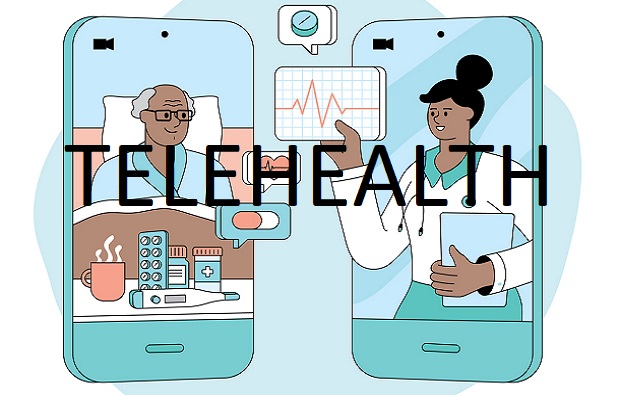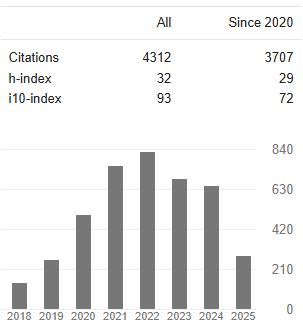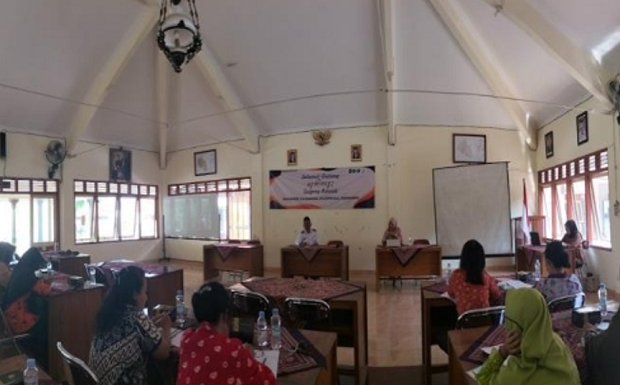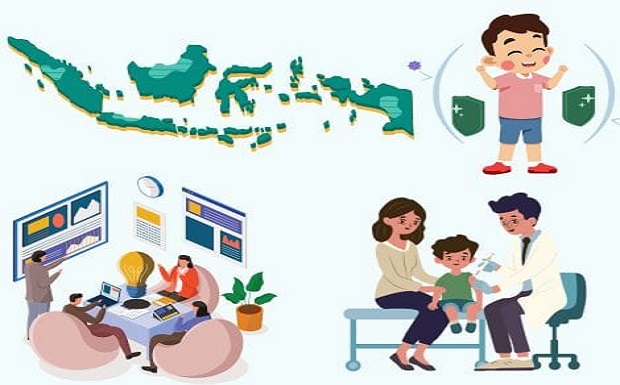IDENTIFYING HEALTHCARE WORKERS' INTENTION TOWARD TELEHEALTH IN INDONESIA DUE TO COVID-19 PANDEMIC

Background: Healthcare sectors adopted various steps during the Covid-19 pandemic to prevent virus transmission, including limiting patient numbers. Telehealth can be an alternative solution since healthcare institutions can provide services without direct contact.
Aims: This research aims to analyze healthcare workers' intentions in Indonesia toward telehealth using the unified theory of acceptance and use of technology (UTAUT) framework with additional variables.
Methods: A literature review was undertaken to develop a framework tested using Partial Least Square-Structural Equation Modeling (PLS-SEM). This study was conducted with Indonesian healthcare institutions in Bandung and Surakarta. Participants consisted of doctors and nurses.
Results: Of 200 participants, this finding showed effort expectancy, social influence, facilitating conditions, self-efficacy, and technology anxiety influenced the intention to adopt telehealth (p-Value ≤ 0.05). However, performance expectancy and perceived security and data have no significant influence (p-Value > 0.05). This study discovered that performance expectancy is influenced by effort expectancy (β = 0.727), while effort expectancy is influenced by self-efficacy (β = 0.642).
Conclusion: Indonesian healthcare institutions must be concerned with factors affecting telehealth implementation, especially with data security, which has proven insignificant. Further research is required to optimize the application.
Arfi, W. Ben et al. (2021) ‘The role of trust in intention to use the IoT in eHealth: Application of the modified UTAUT in a consumer context', Technological Forecasting and Social Change, 167(April 2020), p. 120688. doi: 10.1016/j.techfore.2021.120688.
Bhatia, R. (2021) ‘Telehealth and COVID-19: Using technology to accelerate the curve on access and quality healthcare for citizens in India', Technology in Society, 64(June 2020), p. 101465. doi: 10.1016/j.techsoc.2020.101465.
Binyamin, S. S. (2020) ‘Understanding the Drivers of Wearable Health Monitoring Technology : An Extension of the Unified Theory of Acceptance and Use of Technology', pp. 1–21.
Bokolo, A. J. (2020) ‘Exploring the adoption of telemedicine and virtual software for care of outpatients during and after COVID-19 pandemic', Irish Journal of Medical Science. doi: 10.1007/s11845-020-02299-z.
Brown-Jackson, K. L. (2018) ‘Telemedicine and Telehealth', Consumer-Driven Technologies in Healthcare, 117(6), pp. 139–160. doi: 10.4018/978-1-5225-6198-9.ch009.
Cahya, D., Nugraha, A. and Aknuranda, I. (2017) ‘An Overview of e-Health in Indonesia : Past and Present Applications', 7(5), pp. 2441–2450. doi: 10.11591/ijece.v7i5.pp2441-2450.
Cajita, M. I. et al. (2017) ‘Intention to Use mHealth in Older Adults with Heart Failure', Journal of Cardiovascular Nursing, 32(6), pp. E1–E7. doi: 10.1097/JCN.0000000000000401.
Dhiman, N. and Dogra, N. (2019) ‘Consumer adoption of smartphone fi tness apps : an extended UTAUT2 perspective', 12(3), pp. 363–388. doi: 10.1108/JIBR-05-2018-0158.
Fisk, M., Livingstone, A. and Pit, S. W. (2020) ‘Telehealth in the context of COVID-19: Changing perspectives in Australia, the United Kingdom, and the United States', Journal of Medical Internet Research, 22(6). doi: 10.2196/19264.
Fitrianie, S. et al. (2021) ‘Factors Affecting User ' s Behavioral Intention and Use of a Mobile "‘ Phone "‘ Delivered Cognitive Behavioral Therapy for Insomnia : A Small "‘ Scale UTAUT Analysis', Journal of Medical Systems. doi: 10.1007/s10916-021-01785-w.
Fornell, C. and Larcker, D. F. (1981) ‘Evaluating Structural Equation Models with Unobservable Variables and Measurement Error', Journal of Marketing Research, 18(1), pp. 39–50. doi: 10.2307/3151312.
Hair, J. et al. (2010) Multivariate Data Analysis: A Global Perspective.
Hair, J. F. et al. (2017) ‘Advanced issues in partial least squares structural equation modeling (PLS-SEM)', (May), p. 197.
Henseler, J., Hubona, G. and Ray, P. A. (2016) ‘Using PLS path modeling in new technology research: Updated guidelines', Industrial Management and Data Systems, 116(1), pp. 2–20. doi: 10.1108/IMDS-09-2015-0382.
Hoque, R. and Sorwar, G. (2017) ‘Understanding factors influencing the adoption of mHealth by the elderly: An extension of the UTAUT model', International Journal of Medical Informatics, 101, pp. 75–84. doi: 10.1016/j.ijmedinf.2017.02.002.
Van Houwelingen, C. T. M. et al. (2018) ‘Understanding older people's readiness for receiving telehealth: Mixed-method study', Journal of Medical Internet Research, 20(4). doi: 10.2196/jmir.8407.
Jeganathan, S. et al. (2020) ‘Adherence and acceptability of telehealth appointments for high-risk obstetrical patients during the coronavirus disease 2019 pandemic', American Journal of Obstetrics and Gynecology MFM, 2(4), p. 100233. doi: 10.1016/j.ajogmf.2020.100233.
Kayyali, R. et al. (2017) ‘A qualitative study of Telehealth patient information leaflets ( TILs ): are we giving patients enough information ?', pp. 1–12. doi: 10.1186/s12913-017-2257-5.
Khatun, F., Palas, M. J. and Ray, P. (2017) ‘Using the Unified Theory of Acceptance and Use of Technology model to analyze cloud-based mHealth service for primary care', Digital Medicine, 3(2), p. 69. doi: 10.4103/digm.digm_21_17.
Kusyanti, A. (2017) ‘The Role of Privacy , Security and Trust in User Acceptance of Smartphone User in Indonesia', (c).
Moazzami, B. et al. (2020) ‘COVID-19 and telemedicine: Immediate action required for maintaining healthcare providers well-being', Journal of Clinical Virology, 126(March), p. 104345. doi: 10.1016/j.jcv.2020.104345.
Ohannessian, R., Duong, T. A. and Odone, A. (2020) ‘Global Telemedicine Implementation and Integration Within Health Systems to Fight the COVID-19 Pandemic: A Call to Action', JMIR Public Health and Surveillance, 6(2), p. e18810. doi: 10.2196/18810.
Tsai, J. M. et al. (2019) ‘Acceptance and resistance of telehealth: The perspective of dual-factor concepts in technology adoption', International Journal of Information Management, 49(May 2018), pp. 34–44. doi: 10.1016/j.ijinfomgt.2019.03.003.
Tuckson, R. V, Edmunds, M. and Hodgkins, M. L. (2017) ‘Telehealth', New England Journal of Medicine, 377(16), pp. 1585–1592. doi: 10.1056/NEJMsr1503323.
Venkatesh, V. et al. (2003) ‘User Acceptance of Information Technology: Toward a Unified View', MIS Quarterly, 27(3), pp. 425–478. doi: 10.2307/30036540.
Venkatesh, V., Thong, J. Y. L. and Xu, X. (2012) ‘Consumer Acceptance and Use of Information Technology: Extending the Unified Theory of Acceptance and Use of Technology', MIS Quarterly, 36(1), pp. 157–178. doi: 10.2307/41410412.
Viswanath,Venkatesh and Davis (2000) ‘A Theoretical Extension of the Technology Acceptance Model: Four Longitudinal Field Studies', Management Science, 46(2)(May 2014), pp. 186–204.
Wosik, J. et al. (2020) ‘Telehealth transformation: COVID-19 and the rise of virtual care.', Journal of the American Medical Informatics Association : JAMIA, 27(6), pp. 957–962. doi: 10.1093/jamia/ocaa067.
Zhou, L. et al. (2019) ‘A Telehealth Privacy and Security Self-Assessment Questionnaire for Telehealth Providers: Development and Validation', International Journal of Telerehabilitation, 11(1 SE-Privacy and Security), pp. 3–14. doi: 10.5195/ijt.2019.6276.
Copyright (c) 2022 Muhammad Rafi Fathurahman, Mursyid Hasan Basri, Prawira Fajarindra Belgiawan

This work is licensed under a Creative Commons Attribution-ShareAlike 4.0 International License.
1. As an author you (or your employer or institution) may do the following:
- make copies (print or electronic) of the article for your own personal use, including for your own classroom teaching use;
- make copies and distribute such copies (including through e-mail) of the article to research colleagues, for the personal use by such colleagues (but not commercially or systematically, e.g. via an e-mail list or list server);
- present the article at a meeting or conference and to distribute copies of the article to the delegates attending such meeting;
- for your employer, if the article is a ‘work for hire', made within the scope of your employment, your employer may use all or part of the information in the article for other intra-company use (e.g. training);
- retain patent and trademark rights and rights to any process, procedure, or article of manufacture described in the article;
- include the article in full or in part in a thesis or dissertation (provided that this is not to be published commercially);
- use the article or any part thereof in a printed compilation of your works, such as collected writings or lecture notes (subsequent to publication of the article in the journal); and prepare other derivative works, to extend the article into book-length form, or to otherwise re-use portions or excerpts in other works, with full acknowledgement of its original publication in the journal;
- may reproduce or authorize others to reproduce the article, material extracted from the article, or derivative works for the author's personal use or for company use, provided that the source and the copyright notice are indicated.
All copies, print or electronic, or other use of the paper or article must include the appropriate bibliographic citation for the article's publication in the journal.
2. Requests from third parties
Although authors are permitted to re-use all or portions of the article in other works, this does not include granting third-party requests for reprinting, republishing, or other types of re-use.
3. Author Online Use
- Personal Servers. Authors and/or their employers shall have the right to post the accepted version of articles pre-print version of the article, or revised personal version of the final text of the article (to reflect changes made in the peer review and editing process) on their own personal servers or the servers of their institutions or employers without permission from JAKI;
- Classroom or Internal Training Use. An author is expressly permitted to post any portion of the accepted version of his/her own articles on the author's personal web site or the servers of the author's institution or company in connection with the author's teaching, training, or work responsibilities, provided that the appropriate copyright, credit, and reuse notices appear prominently with the posted material. Examples of permitted uses are lecture materials, course packs, e-reserves, conference presentations, or in-house training courses;























